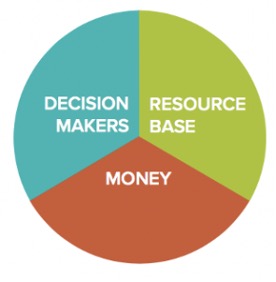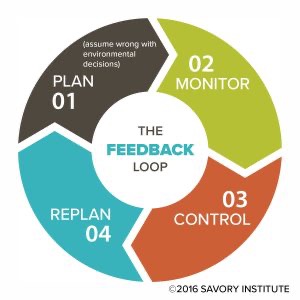In the busyness of life, our goals and actions can be a reaction to immediate needs, desires, or a problem, with a holistic context our goals and actions are proactive towards creating the life you want to lead and the life-supporting environment and behaviours that help ensure it. By framing your management and decision making with a holistic context you gain a sense of calm and things rapidly change for the better as you; solve the root cause of problems, consider the outcome for the people that matter in your life and business, the impact on the environment which sustains us and your long-term prosperity, with every decision.
As humans we are naturally linear and very good at making complicated things- technology, buildings, gadgets to USE… we get consistent results. However, when we turn our brain to managing the complexity of the environment, relationships with people and economies/ longer term prosperity, through the decisions we make. We realise there are many variables that makes the environment, people and economies thrive, as they all Holistic in nature and are managed by us with the decisions we make- with inconsistent results.
Given that everything we USE and EAT comes from our Natural Environment (the Earth) We clearly rely on what is MANAGED to MAKE what undoubtedly enhances our lives, so if we want to keep on MAKING things, ( which is a given) we better get better at MANAGING complexity with our decisions.

Like we update our computer software – we can update our decision making to integrate the complicated with the complex.
The first step is to define what you are managing- this helps our linear brain take stock of the;
The People who decide and we want to consider with every decision.
The Resources– both personal and physical and;
The Money source for the family/ business/ farm.
We can draw on all these areas to Make things and Manage with our decisions at any given time.
Once you know who makes the decisions, who you need to consider in your decisions and what you have available to manage and make things, the Decision Makers create their holistic context.
When management decisions are guided by a holistic context it becomes possible to achieve what you hope to achieve while keeping sight of what is most meaningful to you in both the short and long term.
Holistic Context
Your Holistic Context captures your Quality of Life- Values and the Future you require to live your values. Your holistic context will be your reference point for your day-to-day decisions. Your holistic context will also be used when developing strategies and policies. Traditionally these tend to be framed in silo’s of- meeting a need, desire or addressing a problem, rather than considering the impact on people, environment and prosperity – all at the same time.
The holistic context has two core aspects:
- Quality of life. This is where most people will start. It is an expression of how you, the decision-makers want your lives to be within the whole under management.
- Future resource base. A description of the environment’s attributes required, to sustain the Quality of Life well into the future. And, a description of the attributes you and the decision-makers have that ensure the continued support of all the people who you need to consider and who matter most in your life.
You can also create a Statement of Purpose;
- Statement of Purpose. If you are managing an organization formed for a specific purpose, the first step in creating your holistic context, is to clearly state in a single sentence what that purpose is. This is the most vital piece of an organization’s holistic context and will inform all the rest of it.
Deep ownership in the holistic context by those who formed it is essential. Reading your holistic context should make you feel excited and energised- some people refer to their ‘heart singing’. A Holistic Context gives us a reference point for every decision, enabling us to get more consistent results with the complex facets of our life- (people in our life, our environment and our longer-term prosperity) while drawing on our linear brain to help with complicated things. As a result – we are able to make proactive decisions, that solve the root cause and ensure we have considered the impact on the people in our life, the environment and our longer-term prosperity, with every decision.
…our holistic context keeps us focused on what is most meaningful to us in both the short and long term, enabling you to live your values everyday with your personal attributes and behaviours, and take actions that foster the environment so it can sustain you and future generations.
Ecosystem Processes
To really work with the complexity inherent in our environment that sustains us all, we break it into four fundamental processes, each representing vital functions within it:
- water cycle,
- mineral cycle,
- community dynamics (the patterns of change and development within communities of living organisms), and
- solar energy flow.
We recognize that any action taken to affect one of these processes automatically affects them all. We need to view our global ecosystem (everything on our planet and in its surrounding atmosphere) as the foundation on which all human endeavour, all economies, and all life, are built.
We might think we have little power to influence the environment directly, but 3 times a day we choose what we eat and every-day we choose what we wear. We need to consider whether the production method of that food or fibre enhances the four foundation processes or not. With gadgets and stuff- What resources were used? Were they new, reused or recycled? What is the end of life of the gadget? Can it be recycled or components reused.
We make many decisions and choices about day-to-day things- which all have an impact on our global ecosystem- on which we rely to live and thrive. By checking we are improving our impact on the Water cycle (minimal run off, maximum absorption), Mineral cycle (the making of biology rich soil) , Community Dynamics ( Diversity) and Energy Flow ( green plants capturing sunlight) with the decisions we make, these processes can thrive, outcomes will be better as we continuously live our values and secure the future we require, as articulated in our Holistic Context.
Our holistic context gives us the reference point, to evaluate decisions towards. This decision-making process enables us to include complexity.
Updating our Decision Making
Analysing decision making is not something many people get excited about, but by incorporating 5 critical steps into our existing decision-making journey, the way we make decisions is updated delivering improved outcomes. Now that is worth exploring.
The table shows the comparison between our Linear process and the Holistic Process which has the 5 steps that ensure better results.

We have discussed the first 3 steps- Defining your Whole Under Mgt, Forming an Holistic Context and the 4 Ecosystem processes.
What enables us to manage holistically is the Decision tool, in the form of a matrix with questions that cause us to check that the impact of any given action is aligned with your holistic context.
Context Checks
When we are deciding on a new opportunity or fixing a problem we can brainstorm various options, these options are clearer when we have the knowledge of the 5 updated parts in the decision process. How do we select from all the options- the How to’s? This is where step 5- the Context Checks- Decision Tool comes to the fore. The options are run through the checks/questions to filter and assess which option aligns most with our holistic context, and is socially, environmentally and economically sound both short and long-term.
In brief, the questions are:
- Does this action address the root cause of the problem?
- The weakest link in the situation?
- Does it provide a greater return, in terms of time and money spent, than other possible actions?
- Which of two or more possible enterprises provides the best gross profit (if choosing among enterprises)?
- Is the energy or money to be used in this action derived from the most appropriate source, and will it be used in the most appropriate way, based on your holistic context?
- Will this action lead toward or away from the future resource base described in your holistic context?
- Finally, based on the picture that has emerged, how do you feel about this action now – how will it affect your quality of life and that of others?
When asked and answered in quick succession, the checking questions enable you to see the likely effect of any action on the whole you manage. You don’t want to dwell on any one check to the point that you lose sight of the picture formed by scanning them all.
If the action passes most or all of the checks that apply, you should feel fairly confident in implementing it. If it fails one or more checks, you may want to modify how you implement the action, abandon the idea altogether, or, in some cases, go ahead anyway, better informed and knowing what to monitor to keep things on track.
There are no rules on the order in which to ask these questions, except one: the “Gut Feel check” should always be last. Your answers to the questions asked in this check should reflect the impression gained after passing through all the others.
As you gain experience this checking for alignment with your holistic context will become intuitive and your decision-making both easier and faster.
Feedback Loop
In any situation we manage, we should be monitoring in order to make happen what we want to happen, i.e. to bring about desired changes in line with our holistic context.
An aircraft is off course 98% of the time it is the minor checks of the coordinates and tweaks the pilot makes, that ensures we arrive at our desired destination.
Like a Pilot – we need to – Plan‑Monitor‑Control‑Replan.
Once a plan is made, it is then monitored. If results begin to deviate from what was planned, then control is instituted and the deviation is brought back to plan. Sometimes events go beyond our control, or we fail to control the deviation, and therefore we need to replan. The better we control the plan, the less we need to replan.
We depict this process as a loop because it is a continuous effort. Close attention to it is what makes management proactive rather than reactive.

This post is adapted from: Holistic Management: A Commonsense Revolution for Restoring Our Environment, Third Edition, by Allan Savory and Jody Butterfield (Island Press, 2016)
